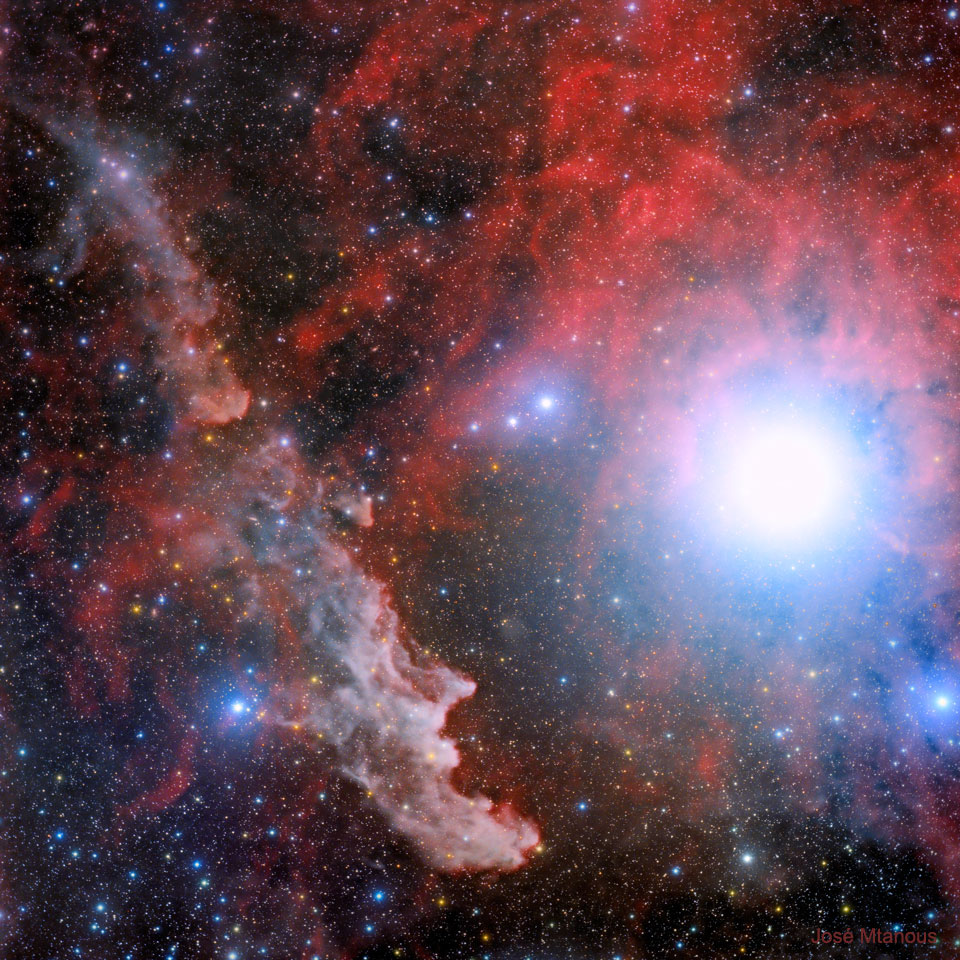2022年1月24日
Rigel and the Witch Head Nebula
Image Credit & Copyright: José Mtanous
Explanation: By starlight this eerie visage shines in the dark, a crooked profile evoking its popular name, the Witch Head Nebula. In fact, this entrancing telescopic portrait gives the impression that the witch has fixed her gaze on Orion’s bright supergiant star Rigel. More formally known as IC 2118, the Witch Head Nebula spans about 50 light-years and is composed of interstellar dust grains reflecting Rigel’s starlight. The blue color of the Witch Head Nebula and of the dust surrounding Rigel is caused not only by Rigel’s intense blue starlight but because the dust grains scatter blue light more efficiently than red. The same physical process causes Earth’s daytime sky to appear blue, although the scatterers in Earth’s atmosphere are molecules of nitrogen and oxygen. Rigel, the Witch Head Nebula, and gas and dust that surrounds them lie about 800 light-years away.
Tomorrow’s picture: comet time-lapse
参宿七与女巫头星云
影像提供与版权: José Mtanous
说明: 在星光的照耀下,这付怪异的脸谱在黝黑的太空中荧荧生辉,而它扭曲如钩的轮廓,为它博得女巫头星云的昵称。在这幅令人着迷的望远镜影像里,女巫看似盯着猎户座明亮的超巨星参宿七。正式编录号为IC 2118、跨幅超过50光年的的女巫头星云,是一团正在反射参宿七星光的星际尘埃云。而女巫头星云和参宿七周围尘埃的泛蓝色泽,除了是受到参宿七强烈泛蓝星光的直接照耀之外,有部分来自尘埃微粒散射蓝光的效率高于散射红光。相同的物理过程,也造就了地球白画的蓝天,只不过在地球上,造成散射的粒子是地球大气里的氮和氧分子。参宿七、女巫头星云和它们周围的云气和尘埃,距离我们约800光年远。
明日的图片: comet time-lapse







